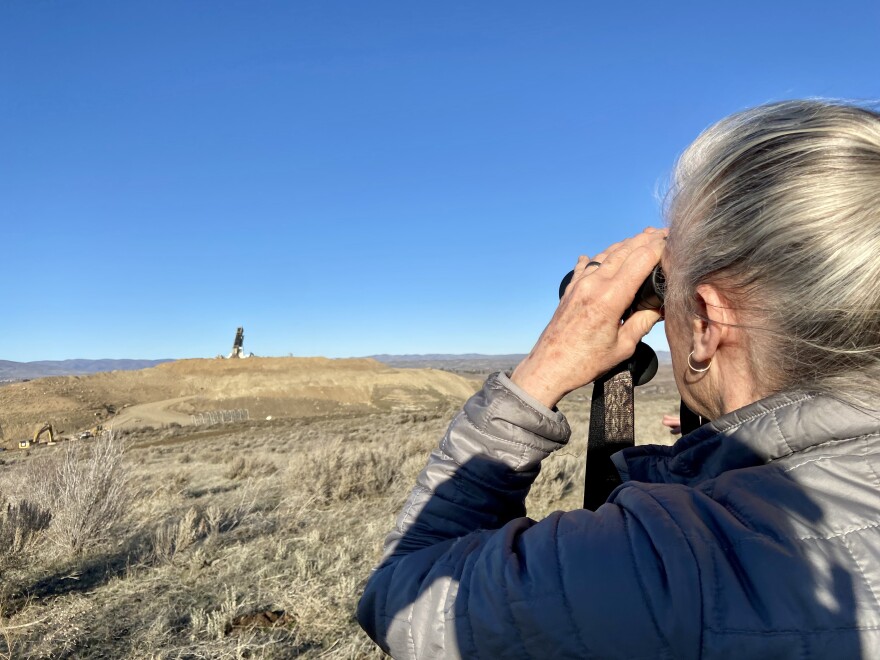Up on a hilltop in Yakima County, Carole Degrave used to spend hours outside, watching wildlife, eating an apple, and enjoying the calm. In her backyard, wind chimes blow softly in the breeze. A 30-year-old apricot tree shades the center of her yard.
However, since 2019, her outdoor sanctuary has faced an onslaught of traffic noises, noxious odors, and blowing debris from a landfill 1,000 feet from her property line, where aspen and cottonwood trees used to block the landfill mountain.
“That’s the landfill. They just keep filling it in and raising it,” Degrave said, pointing out the view from her backyard.
After DTG Recycle bought the landfill for $9.2 million in October 2019, neighbors said the problems worsened.
Neighbors said they worried about their health and quality of life. They said, for years, regulators didn’t adequately monitor the waste coming into the landfill or the air and water pollution coming out of it.
So, they formed the Friends of Rocky Top to advocate for themselves.
“DTG should not operate it if they can't operate within compliance,” said Scott Cave, a consultant for Friends of Rocky Top.
DTG didn’t grant multiple interview requests or respond to detailed questions.
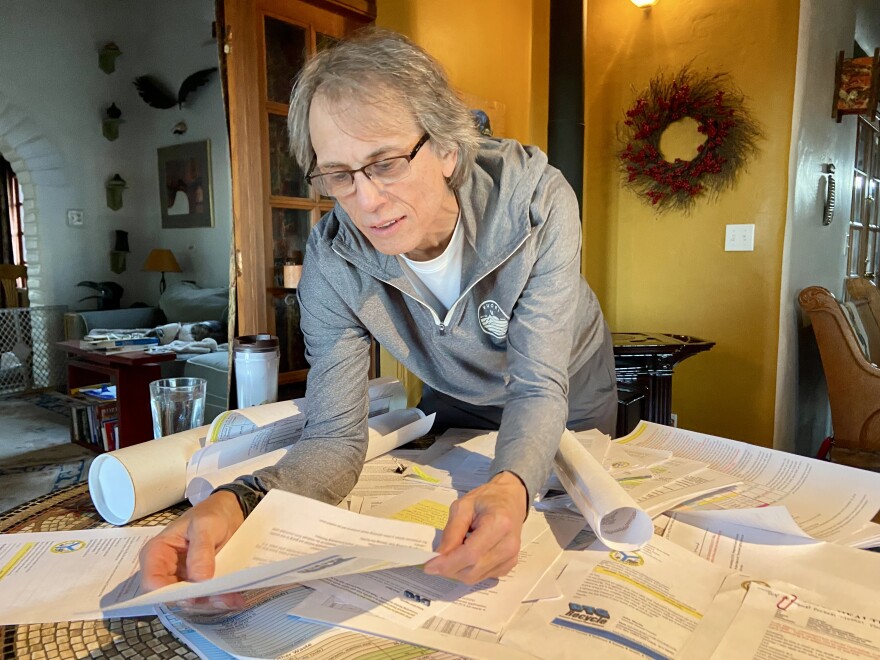
In an email, John Martin, DTG Recycle’s associate general counsel wrote, “The DTG Recycle facility in Yakima is a permitted solid waste facility operated within the boundaries of the permits."
Officials at the Yakima Health District, which is the lead regulatory agency for the landfill, said inspectors routinely monitor the 12 landfills in the county four times a year.
However, through public records requests, Cave found the health district didn’t monitor the landfill’s operating records during its quarterly inspections from 2013 through the last quarter of 2016. During this time, before DTG bought the facility, the landfill accepted a dramatic increase of waste shipped in from outside Yakima County, Cave said.
In the years since, operating records have been sporadically checked, according to records.
When complaints began piling up about the landfill, from neighbors, anonymous tips, and the Washington Department of Ecology, inspections ramped up, said Shawn Magee, the director of environmental health at the district
“It was almost every other day we were going out there investigating the odor complaints, making sure that the windblown debris weren't out of control, investigating after hours operations, which is in violation of the land use permit, and looking for unacceptable waste going into the facility,” Magee said.
Eventually, he said, inspectors identified a hotspot where the odors were quite strong, including a crack in the landfill that was releasing gasses.
The health district responds to every complaint it receives, heading to any facility to either validate or abate the complaint, Magee said.
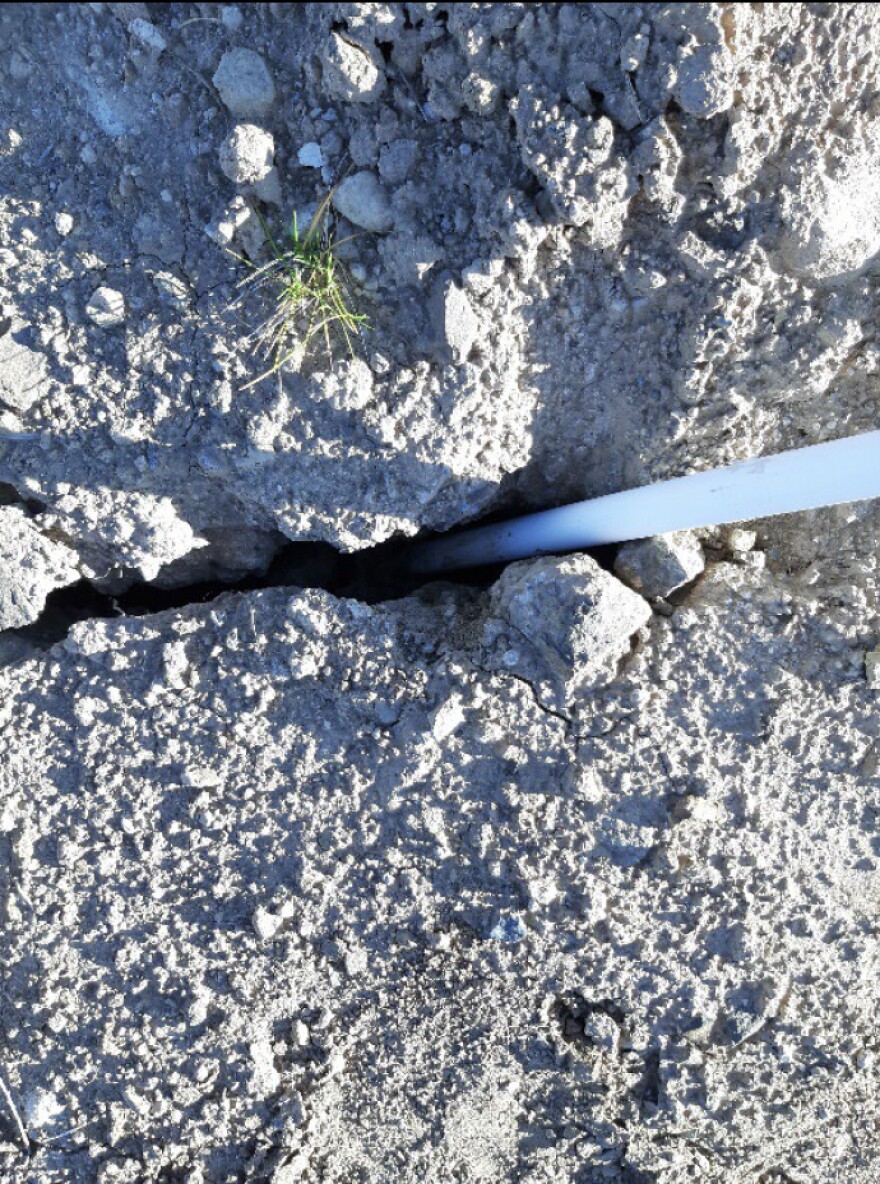
However, neighbors said they worried if they didn’t stay on top of things the landfill would continue to disrupt their lives, so they pushed DTG and regulators to conduct more testing and add more groundwater monitoring wells and air sampling sites.
Just in the last few weeks, regulators and Freestone Environmental Services, an environmental consultant company that works with DTG, conducted a robust sampling effort, gridded out across the entire landfill, to better understand the specific levels and any potential hotspots of volatile organic compounds, Magee said.
“That information, which we haven't gotten back yet, is going to tell us a lot more about what's causing this or what we need to do to further investigate how to mitigate the issue and get rid of it,” Magee said.
In the past, Friends of Rocky Top has hired a third-party consulting firm, GeoEngineers, Inc., to double check and respond to the results and methodology of the Freestone Environmental Services reports.
The DTG landfill is what’s known as a limited purpose landfill. In Washington, there are 16 limited purpose landfills and 14 municipal solid waste landfills, according to the Department of Ecology.
Because the DTG landfill is limited in scope, it can accept only certain types of waste, including construction debris, sheetrock, roofing supplies, and lumber.
Regulators originally approved permits for a demolition landfill in the early 1990s. In 2008, the landfill received a limited purpose landfill permit, which was expanded in 2015.
However, neighbors told the Northwest News Network they’ve watched trucks filled to the brim dump loads into the landfill pit without proper inspection.
During hikes on nearby trails at the Cowiche Canyon Conservancy, they’ve found scattered litter that included a hotel receipt from the Econo Lodge in Tacoma. Others picked up dental records and spoiled food from their backyards – none of which is litter related to construction.
Hikers and mountain bikers along area trails have found litter scattered throughout the sagebrush, said Nancy Lust, who lives in the area. On a hike along the Horse and Wholly Moses trails in February, Lust watched as dust blew off the landfill.
“Depending on how hard the wind is blowing or which direction is blowing, when you come home, if you leave your windows open, then it's really dusty inside,” Lust said.
She watched a dump truck tip its load into the landfill, as she scanned with binoculars to get a closer look.
“I would love to know what is in those trucks,” Lust said. “They’re building this mountain fast.”
When properly managed, landfills are supposed to act as a barrier between the environment and potentially contaminated waste, according to the U.S. Environmental Protection Agency. Disposing waste in the proper location is important because landfills are managed differently depending on the type of waste that’s accepted.

Certain types of waste needs to be disposed of in a landfill that’s required to have impenetrable liners. Those liners prevent all that liquid from seeping into groundwater. Limited purpose landfills, including the DTG landfill, don’t have liners.
In addition, Magee said, inspectors shouldn’t find household waste, like rotten milk or spoiled leftovers, in a limited purpose landfill. From time to time, inspectors also will find tires, which are off-limits in limited purpose landfills, he said.
However, Lust said, she’s seen debris from the DTG landfill that suggests off-limits items made it into the landfill.
“There was all this plastic flying all over the sagebrush. I have all these pictures of spaghetti noodle wrappers, and I remember industrial sized potato flakes for a cafeteria or something. That just suggests it’s garbage,” Lust said.
More recently, Lust said, DTG fenced in part of the landfill so that debris doesn't blow out as much. The company also hired people to pick up trash that does escape, which neighbors said has helped fix the litter problem.
When certain types of waste improperly mix together, Magee said, they can generate harmful gasses, pollute groundwater, and spark underground landfill fires. That’s what regulators work to prevent.
“If landfills go outside that scope, that landfill may not be designed to handle waste if it contains liquid or moisture or generates a really high bacterial load. That could affect groundwater or things leaking out of the landfill that could cause a health threat,” Magee said.
In May, the Washington Department of Ecology suggested in a letter to the Yakima Health District that the noxious vapors, known as volatile organic compounds or VOCs, emanating from the landfill suggest more than just construction waste is buried in the landfill.
“The presence of elevated concentrations of the VOCs reported in gas samples at this facility is potentially a little difficult to explain by the waste stream that the facility is and has been permitted to accept,” according to a letter from James Rivard, regional manager of Ecology’s Solid Waste Management Program, to the Yakima Health District.
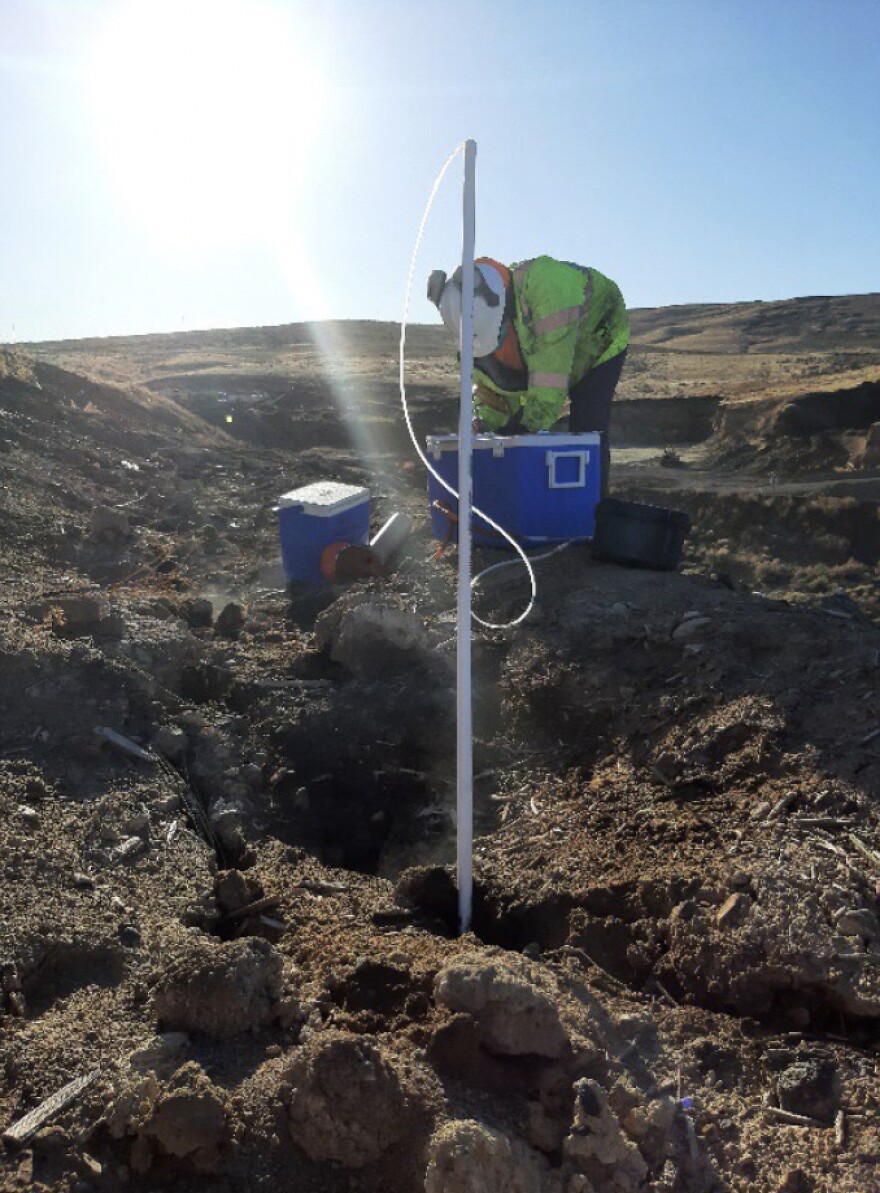
Those elevated gasses include benzene, a carcinogen, and propene, which can cause dizziness and may affect the heart and nervous system.
According to a third party report commissioned by Friends of Rocky Top, benzene levels are up to 50 times higher than what the U.S. Environmental Protection Agency allows at municipal solid waste landfills. The third party report from GeoEngineers Inc. suggested that DTG should use stricter standards when measuring toxic air pollutants.
According to a March 2022 letter, officials from the Yakima Clean Air Agency asked for more information about the toxic air pollutants, including how the emissions are moving through the landfill. The agency suggested further sampling to identify and quantify the volatile organic compounds.
In addition, according to the Department of Ecology letter, high levels of volatile organic compounds at the landfill could hint at struggles to meet minimum performance standards. According to the letter, that either could be because of a poorly designed landfill or a poorly operated facility.
However, Magee said, the landfill originally was approved to operate the way it’s operating now, all before he came to work at the health district.
But, inspectors can’t be at the landfill 24 hours a day, so Magee said he’s not 100% certain whether improper material was accepted at the facility, either by DTG or the previous owner, Ron Anderson.
As the closest neighbor to the pit, Degrave said the air outside her home sometimes was so pungent her head immediately hurt and her eyes filled with water.
When the odor got bad enough for long enough, she began taking daily notes about the smells wafting her way, charting each day on a scale of one to 10.
A ranking of 10, she said, is putrid.
“It's nauseating. You don't feel good, and you can't sit outside, and you can't eat outside. You just feel like your whole being is this odor,” Degrave said.
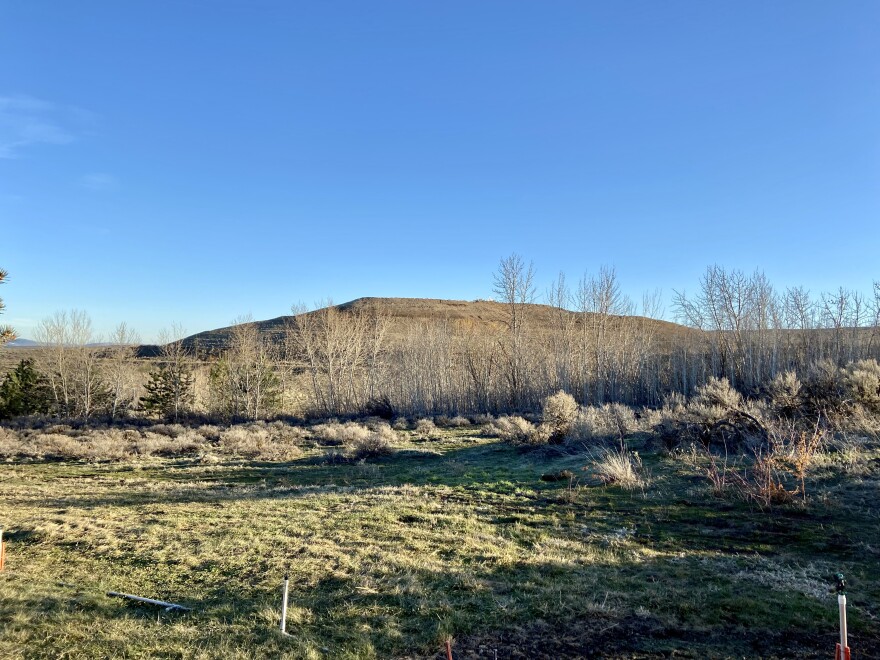
Cave added that he’s been to Degrave’s property when he thought the smell was bad.
“We’ll say, ‘Oh, God.’ And she’s like, that’s a three out of 10,” Cave said, of Degrave’s odor rankings.
Recently, DTG started covering the crack to hemm in the noxious vapors it said is likely emanating from the stress fractures on the northeastern side.
“The intensity of the odors is greatest in areas where fractures in the earth are visibly venting or in once open-fractured areas that have then been purposely covered,” according to the Feb. 17 Firestone Environmental Services report. “DTG has initiated efforts to fill/cap the fractures to mitigate the release of odor-causing gasses.”
Since then, Degrave said she hasn’t noticed as much odor. However, she and other neighbors said they worry the chemicals will now leak into the groundwater, like shoving household clutter into a closet instead of cleaning it up. The clutter doesn’t disappear. It’s just moved elsewhere.
In addition to concerns about vapors in the air, according to the Department of Ecology, harmful compounds could reach the groundwater. The letter suggested installing a monitoring well that would detect the first signs of these substances in groundwater.
Currently, DTG has two groundwater monitoring wells along the northern border of the facility, with plans to build another well that could detect volatile organic compounds earlier, according to a report.
After more public records requests than Cave said he can count, he compiled years of data into a chart that tracked the waste stream into the landfill. In recent years, Cave noted a sharp uptick in the amount of waste accepted at the landfill.
“This company says one thing. And then if you look at the reality, it is really quite different,” Cave said.
In addition, Cave has argued for a core sample, to better learn what is buried in the landfill. While expensive, Cave said, a core sample would splice into the landfill mound and help regulators know what is happening beneath the surface.
Another concern, Cave said, is the high underground temperature in certain spots of the landfill. Neighbors said they have noticed snow melts in the northern section of the landfill. Grass won’t grow there either, neighbors said.
In December 2021, samples showed one location that read 145 degrees Fahrenheit on a digital subsurface thermometer and 149 degrees Fahrenheit on an infrared surface gauge.
Those readings require further investigation, according to the Department of Ecology letter.
At that same location, the Freestone Environmental Services report noted visible vapors emanating from a 2-inch wide fracture in the surface of the landfill, which could indicate a subsurface landfill fire.
At a minimum, according to the Department of Ecology, the elevated temperature readings could indicate rapidly decomposing waste. Answers won’t come without further investigation, according to the department.
Degrave and Lust said change couldn’t come soon enough, especially as reports continue to come out, showing people’s health could be at risk.
“We're the ones pushing for these reports that are showing all of these toxic chemicals coming out of the landfill, and DTG is still operating. They're still accepting waste,” Lust said.

